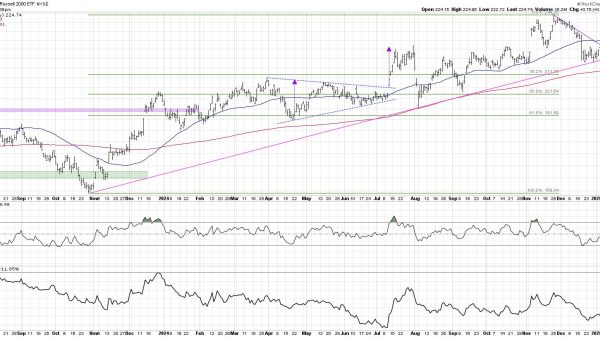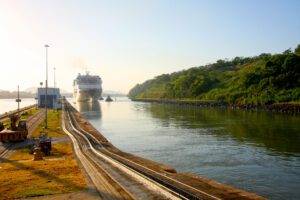The Panama Canal, a vital trade route connecting the Pacific and Atlantic Oceans, is currently facing significant congestion and delays with more than 200 ships are stuck on both sides of the canal, with some waiting for weeks to cross.
This congestion is a result of authorities capping the number of crossings due to a serious drought in the region. In this article, we will explore the causes of the congestion, the impact on global trade, and the measures being taken to address the situation.
The ongoing drought in Panama has led to a severe reduction in water levels, affecting the operation of the Panama Canal. The canal uses three times as much water as New York City on a daily basis, and the lack of rainfall to replenish it has resulted in water conservation measures. The Panama Canal Authority (PCA) has capped the number of daily transits at 32 in an effort to conserve water, down from the usual 36 transits. This reduction in capacity has caused a backlog of ships waiting to cross, with some vessels waiting for more than 20 days.
Vessel-tracking data reveals the extent of the congestion at the entrances of the Panama Canal on both the Pacific and Atlantic oceans. Hundreds of ships, mainly bulk cargo or gas carriers, can be seen waiting near the canal entrances. The entrances on both sides of the canal are jammed, and the backlog of ships waiting to cross is causing a traffic jam. The congestion is particularly affecting large vessels that carry bulky items such as coal and iron ore. These vessels, usually owned by medium or small operators, do not receive priority and are stuck in the traffic jam.
The Economic Impact
The congestion at the Panama Canal is causing significant economic repercussions. Panama is set to lose $200 million in revenue due to the delays. The delays in shipping are also expected to cause a spike in global grocery and parcel prices as extra fees are added to shipping costs. The congestion is disrupting the supply chain and increasing transport costs for cargo owners, including American oil and Asian importers and gas exporters. The impact is not limited to Panama; it has global implications, affecting trade routes and causing delays in the delivery of goods.
Measures to Address the Congestion
The Panama Canal Authority is implementing various measures to address the congestion and alleviate the delays. The number of vessels allowed to pass through the canal each day has been reduced, and restrictions on the maximum depth of ships have been imposed. Additionally, the PCA has temporarily changed its reservation rules to allow more ships without bookings to travel through the canal. These measures aim to manage the backlog and reduce waiting times for vessels.
The drought conditions and resulting congestion at the Panama Canal present significant challenges and uncertainties. The severity of the drought has no historical precedent, even compared to the last drought in 2019-20. The Panama Canal Authority warned that the restrictions on vessel transits could remain in place until the end of the year if the low rainfall persists. The uncertainty surrounding the situation is causing concerns for shipowners and operators who have to make crucial decisions regarding their routes and schedules.
The congestion at the Panama Canal has implications for global trade, particularly for the movement of goods between Asia and the United States. The Panama Canal is a critical trade link for US shippers heading to Gulf and East Coast ports. The delays and extra fees associated with the congestion are increasing shipping costs and potentially leading to higher prices and less choice for American consumers. The situation is also prompting shippers to consider alternative routes, such as transiting the Suez Canal, which can add significant transit time and fuel costs.
The Role of Climate Change
The drought conditions and water scarcity at the Panama Canal can be attributed, at least in part, to climate change. The return of the El Niño weather pattern is making Panama and the surrounding region warmer and drier. Weather-related problems, such as droughts and low water levels, are becoming more frequent and impacting critical trade routes like the Panama Canal. The situation highlights the need for sustainable water management practices and adaptation strategies to mitigate the impact of climate change on global trade.
The Future of the Panama Canal
The Panama Canal Authority is facing unprecedented challenges in managing the congestion and water scarcity at the canal. The PCA is exploring long-term solutions, such as diverting additional rivers into the waterway to increase water supply. However, these solutions require significant investment and planning. In the meantime, the PCA continues to communicate with customers and stakeholders, providing real-time information to help them make informed decisions. The future of the Panama Canal relies on effective water management, adaptation to climate change, and collaboration between all stakeholders involved.
Read more:
Ships Face Over 20-day Wait at Panama Canal Due to Drought Conditions























